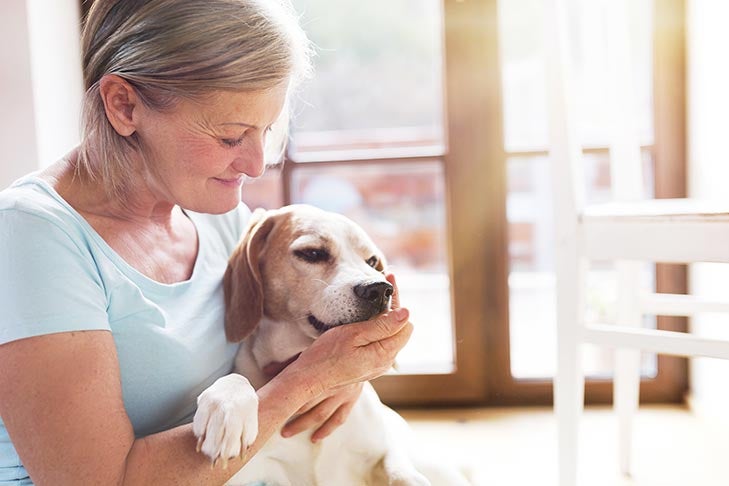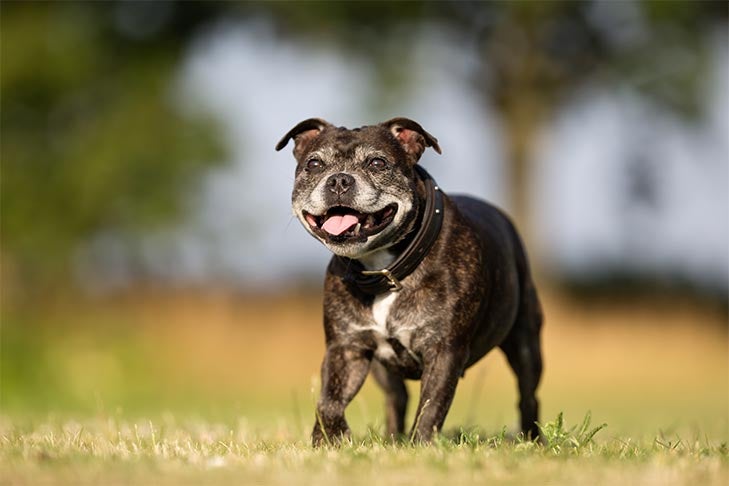
Humans rely on their eyes more than any other sense. Dogs, however, are different. In cases of gradual blindness in canines, many owners don’t even realize their dogs are losing their vision. This is because dogs use their sense of smell and hearing to navigate their world just as much, if not more, than sight. Sudden blindness, however, is disorienting, confusing, and often scary. Some dogs become fearful or aggressive, while others struggle to get used to their new normal. Luckily, there are things you can do to help improve your blind dog’s quality of life.
Avoid Change
Dogs thrive on routine, and blind dogs depend on it. While you might have to adapt your dog’s routine a little to accommodate his new circumstances, avoid changing important landmarks in his world, such as where his food and water bowls are placed. Above all, don’t rearrange the furniture.
Safety Measures
Blind dogs can find stairs, pools, and sharp edges to be extremely problematic. Blocking off the stairs and entrances to pools or other high-risk areas will help prevent accidents. Baby-proofing supplies can come in handy and make it easy to blunt sharp-edged coffee tables and other furniture. When you are not home, consider crating your dog or restricting him to a single, hazard-free room.

Tactile Cues
Dogs sense changes in footing, just like people do. This makes it relatively simple to give your dog nonvisual cues to use for navigating around the home. For instance, doormats can help your dog find the door, and laying down gravel or wood chips along the perimeter of your yard will help prevent your dog from running into the fence. If you have hardwood floors, nonslip rugs or runners can act as guides throughout the house.

Noise Cues
Blind dogs need exercise to stay active and healthy, but exercising while visually impaired can be disconcerting. Toys that make noise, like balls with bells, are easier to locate during playtime. Attaching noise-making devices to your shoes or belt will help your dog feel more confident while out on walks, as he will know where you are at all times. It becomes even more important to regularly talk to your dog and assure him in order to reduce confusion and anxiety. However, make sure you always have his attention before you pet or touch him, so he doesn’t become startled or scared. This is a common problem when children and strangers approach a blind dog.
Training
You may have to teach your blind dog new commands, such as “wait,” “step up,” and “step down.” “Wait” is particularly useful, as it lets your dog know when he’s about to run into something. Patiently introduce your canine companion to the new tactile cues you’ve left around the house. You’ll be surprised at how quickly he catches on.
Products
There are several products on the market designed specifically to help blind dogs. One of them, Muffin’s Halo, acts as a bumper that prevents dogs from running into things head-on. Anxious dogs may also benefit from anti-anxiety medications or behavior modification training, so talk to your veterinarian or veterinary ophthalmologist about products she thinks may assist your dog.
The most important thing you can do for your blind dog is remain optimistic. You’ve still got a furry BFF that is ready and willing to love you unconditionally.


